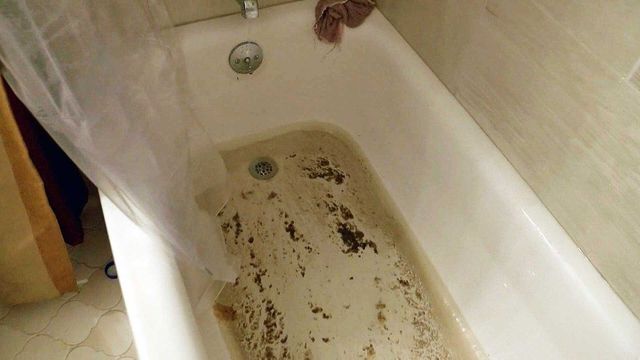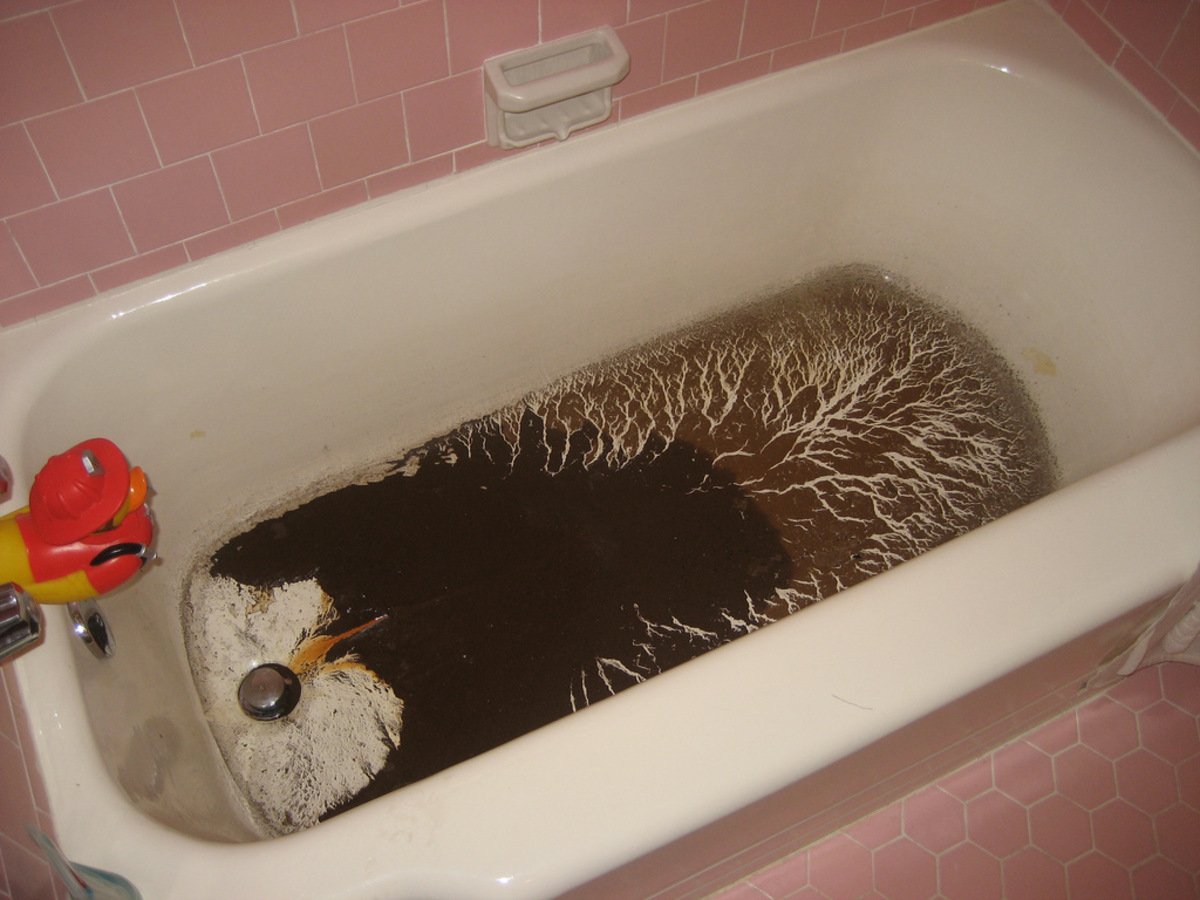How do you really feel in relation to Why sewage is coming up through your bathtub?

Sewer backup in the tub can be a traumatic and unsanitary trouble for any type of property owner. Not just is it bothersome, however it also positions significant health and wellness dangers and shows underlying problems with the plumbing system. Recognizing why sewage is turning up through the bathtub is crucial for taking appropriate action to address the trouble successfully.
Intro to the Problem
Usual Factors for Sewer Backup
Blockages in the Sewer Line
Among one of the most common causes of sewer backup is a clog in the drain line. This can occur as a result of the accumulation of particles, oil, or foreign items in the pipelines, preventing correct flow and creating sewage to back up into your bathtub.
Tree Root Invasion
Tree origins seeking dampness and nutrients can infiltrate drain lines with small splits or joints. Over time, these roots can grow and increase, causing significant damage to the pipes and leading to sewer backup concerns.
Comprehending the Issue
When sewage starts backing up into the tub, it's a clear indication of an issue with the drainage system. The wastewater that ought to be flowing far from your home is instead locating its back right into your space, which can cause substantial damage and health hazards.
Potential Causes
A number of aspects can add to sewer backup in the bath tub. From clogs in the sewage system line to problems with the plumbing infrastructure, determining the root cause is important for finding a solution.
Aging Infrastructure
Older homes might have obsoleted plumbing systems that are a lot more vulnerable to corrosion, cracks, and damage. As pipes age, they come to be more susceptible to leakages and blockages, increasing the possibility of sewage back-up occurrences.
Heavy Rainfall or Flooding
During durations of heavy rainfall or flooding, the drain system may come to be overwhelmed with excess water, triggering back-ups and overflows. This can lead to sewer backing up into bath tubs and various other fixtures inside the home.
Indicators of Sewer Backup
Foul Odors
Undesirable smells rising from drains or components, specifically in the washroom, might suggest sewage backup problems. These smells are often strong and consistent, signaling an issue that needs instant focus.
Slow Draining Fixtures
Bath tubs, sinks, and toilets that drain gradually or not in any way could be experiencing sewer backup. If multiple components are influenced concurrently, it's likely that the issue stems from an usual point, such as the major sewer line.
Gurgling Sounds
Strange gurgling or gurgling noises originating from drains pipes when water is running elsewhere in the house are a measure of air trapped in the plumbing system. This air build-up can result from sewer backup and need to be explored without delay.
Health And Wellness Dangers Associated with Sewage Back-up
Contamination of Water System
Sewer back-up can infect the water in your home, positioning a severe health risk to you and your household. Direct exposure to contaminated water can cause stomach concerns, skin infections, and various other health problems.
Mold Development
Dampness from sewer back-up can create perfect conditions for mold and mildew growth in your home. Mold and mildew spores can intensify respiratory issues and cause allergies in sensitive people, making prompt cleaning crucial.
Spread of Illness
Sewer has dangerous microorganisms, viruses, and parasites that can trigger a variety of diseases, including liver disease, cholera, and gastroenteritis. Coming into contact with sewage or infected surface areas puts you in jeopardy of infection.
Tidying up After Sewer Back-up
Disinfection Procedures
Thoroughly sanitize and sanitize impacted areas after sewage backup to get rid of harmful bacteria and prevent mold and mildew growth. Usage proper cleansing products and safety equipment to make certain risk-free and effective cleanup.
Restoration of Impacted Areas
Repair any type of damages to flooring, wall surfaces, or components triggered by sewer back-up. Depending on the extent of the damage, you might require to replace carpeting, drywall, or various other products to restore your home to its pre-loss condition.
Immediate Actions to Take
Turning Off Water System
In the event of sewer backup, it's vital to switch off the water supply to stop additional contamination and damages. Locate the major water shutoff valve in your house and shut it off up until the issue can be settled.
Contacting a Professional Plumber
Taking care of sewage back-up is not a do it yourself task. Contact an accredited plumber with experience in managing sewage-related concerns to assess the situation and do necessary repairs or clean-ups.
Preventing Contact with Polluted Water
Till the sewer back-up is dealt with, stay clear of contact with contaminated water to prevent the spread of germs and virus. Wear safety gear if you should be in the damaged area and wash your hands extensively later.
Safety nets
Routine Upkeep of Sewer Lines
Schedule regular assessments and maintenance of your sewage system lines to determine and deal with possible concerns prior to they escalate into major problems. This can include cleaning particles, examining for tree root intrusion, and repairing any type of damaged pipelines.
Mounting Backwater Valves
Think about installing backwater valves in your plumbing system to prevent sewage from flowing back into your home during periods of heavy rainfall or flooding. These valves immediately close when water starts backing up, safeguarding your home from contamination.
Proper Disposal of Home Waste
Avoid flushing anything aside from bathroom tissue and human waste down the bathroom to prevent obstructions and clogs in the drain line. Dispose of oil, oil, and other home chemicals correctly to reduce the threat of plumbing issues.
Why Is Water Backing Up in My Bathtub When I Flush My Toilet?
What to do about a sewer line clog
First, don’t bother with plunging. No amount of plunging will dislodge the clog in a sewer line. The clog is too far away. Plungers are for clogs in the toilet itself, not the sewer line. Plus, the most likely causes of a sewer clog are:
- Tree roots
- Flushed toys or feminine products
- Grease buildup
Those items don’t move easily. And in the case of tree roots, the roots need to be cut out of the pipe and the pipe will need to be repaired.
You’ll need a closet auger. A closet auger is a type of plumber’s snake with a protective cover to keep from scratching the delicate porcelain toilet. If the clog is further down, you may need to remove the toilet or use one of your cleanouts to get to the clog.
We also recommend doing a video inspection of the drain to ensure that the cause of the clog has been completely removed. Otherwise, you could have the same problem again in a few days or weeks.
https://mspplumbingheatingair.com/blog/why-is-water-backing-up-in-my-bathtub-when-i-flush-my-toilet

Do you really like reading up on Water Coming up Bathtub Drain? Write a remark directly below. We will be glad to know your insights about this post. We hope that you visit us again in the future. So long as you enjoyed reading our page plz don't forget to pass it around. Thanks a bunch for your time. Kindly stop by our blog back soon.
Need Help? Hire Us Now!
Comments on “Deciphering the Mystery of Effluent in the Bathtub”